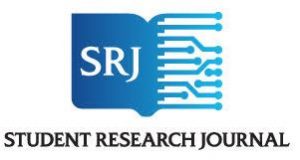Publication analysis
About the publication
Title: International Journal of Librarianship (IJoL)
ISSN: 2474-3542
Website: http://ojs.calaijol.org/index.php/ijol
Purpose, objective, or mission: The International Journal of Librarianship (IJoL) “is a peer-reviewed open access journal dedicated to publishing articles on as broad an array of topics as possible from all aspects of librarianship in all types of libraries.”1
Target audience: IJoL‘s primary audience is members of the Chinese American Librarians Association (CALA), an affiliate of the American Library Association (ALA) that provides a forum for discussion and development among Chinese American librarians and information professionals.2 However, as an international and open-access journal, IJoL‘s scope and reach is worldwide.
Publisher: IJoL is published by CALA, an affiliate of the ALA.3
Peer reviewed? Yes. Articles deemed suitable by the editors are double-blind peer reviewed.4
Type: LIS scholarly journal.
Medium: Online.
Content: “IJoL publishes original research papers, practical developments, reviews, and commentaries of value to professional practice in librarianship in general. It encourages communication on librarianship within and among relevant professional and academic communities.”5 Regular columns include Featured Articles, Reports from the Field, LIS Education around the World, Commentaries, Reviews, and News.
Frequency of publication: Twice each year.6
About the publication’s submission guidelines
Location of submission guidelines: Submissions.
Types of contributions accepted: IJoL accepts Featured Articles, which are original research or comprehensive, in-depth analyses; Reports from the Field, which “describe the implementation and assessment of innovative practices in libraries of all types” and report on distinguished Chinese librarians; Reviews of books, articles, or conference papers; and Commentaries offering perspectives on current topics.7 The journal publishes on all topics related to libraries and librarianship, including “academic, research, public, school and special libraries” and other information institutions; it is focused on, but not limited to, “major development of Chinese librarianship throughout the world.”8
Submission and review process: IJoL uses the Open Journal Systems9 online portal for submissions and offers guidelines and a submission checklist, which authors should follow to ensure that processing and publishing is not delayed.10 Each section has its own policies, so authors should check that their submissions meet these requirements as well. The editor sends suitable articles to two referees for blind review, and articles may be accepted as is, with revisions, or declined.11
Editorial tone: The tone is overall scholarly but also appropriate to each column and topic.
Style guide used: Publication Manual of the American Psychological Association, sixth edition.12
Conclusion: Evaluation of publication’s potential for LIS authors
IJoL‘s first issue was in 2016, so it is a very new scholarly journal. It is the official journal of CALA, which was established in the 1970s.13 In the first editorial, Editor-in-Chief Guoying Liu introduces the journal as “a forum for librarians and other researchers from Canada, China, the UK, the US and other countries to share their research, best practices and perspectives in international librarianship, international collaboration and academic exchange, library spaces and services, library technology and innovation, and other aspects of information science and studies.”14 This journal is a great fit for scholars, professionals, and students whose work or research focuses on Chinese librarianship, but the journal publishes on all topics of library and information science, including all types of libraries and information institutions.
Audience analysis
About the publication’s readers
Publication circulation: IJoL statistics show that there are 131 registered users and 113 registered readers in 2018.15
Audience location and language or cultural considerations: IJoL readership is most likely Chinese and Chinese American librarians and information professionals. However, this is an English-language international journal that publishes on all LIS topics, and its readership is similarly international. Authors should keep in mind this international readership and explain regionalisms and particular terms and practices accordingly.
Reader characteristics: Readers are librarians and information professionals, scholars, and students interested in Chinese librarianship and information communities, as well as broader topics and current trends affecting LIS professionals throughout the world. The editors of IJoL are from universities and libraries in the United States, China, and Canada.16
Knowledge of LIS subject matter: Readers most likely have a strong understanding of LIS subject matter; however, writers should explain regional or particular terms, concepts, and practices for an international readership.
Conclusion: Analysis of reader characteristics and their potential impact on authors
LIS authors should keep in mind that the readership for this journal is global but there is a particular interest in Chinese librarianship throughout the United States, Canada, and China. Readers of the journal are LIS scholars, professionals, and graduate students who are interested in developments particular to Chinese user populations and research and practices that can be extended to a similarly global population. As a new, open-access journal, LIS authors can peruse what types of articles are being published and editorials that explain the journal’s direction.17
Last updated: April 6, 2018

